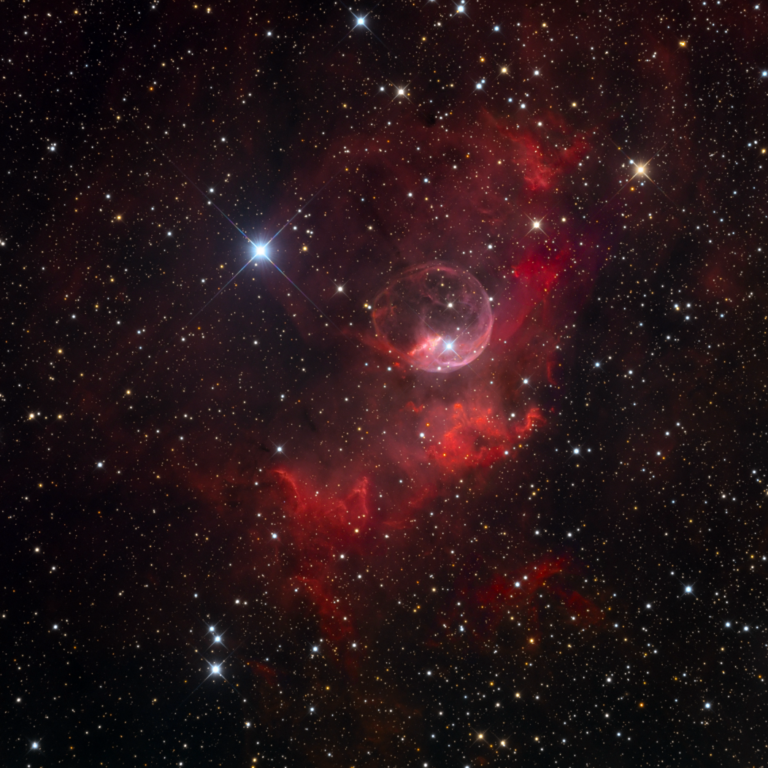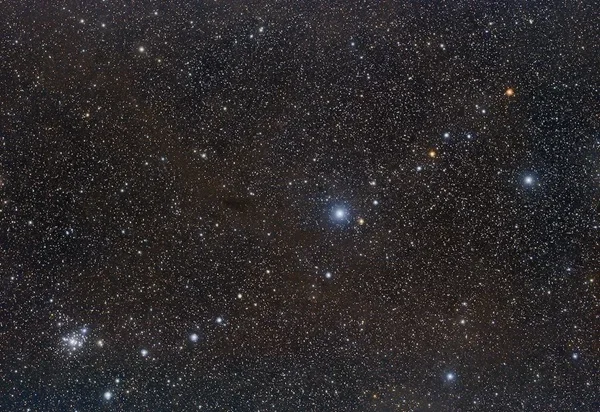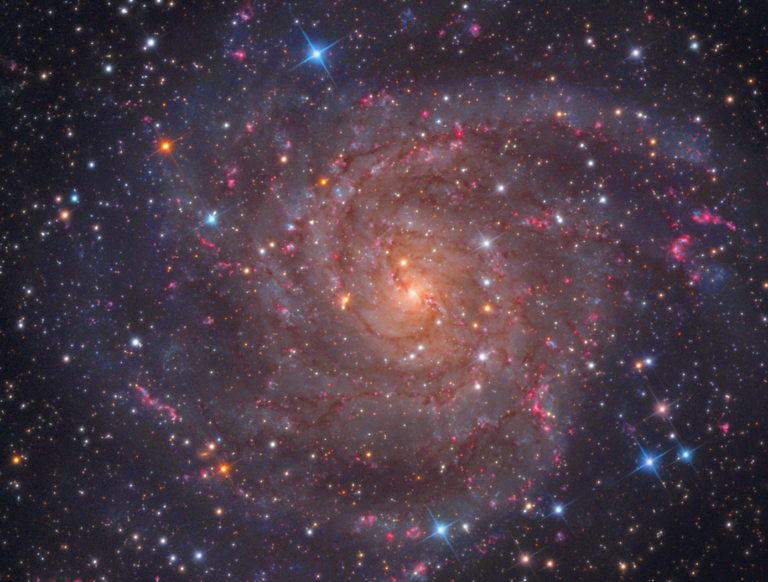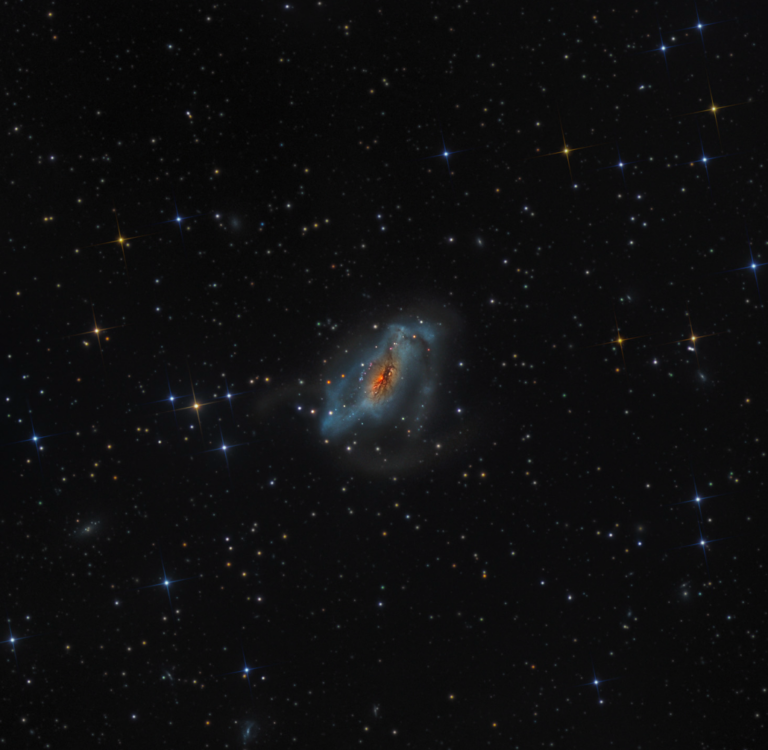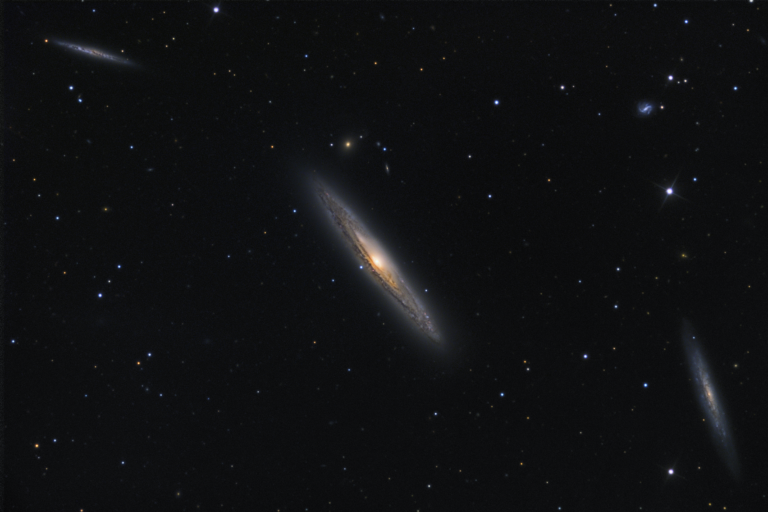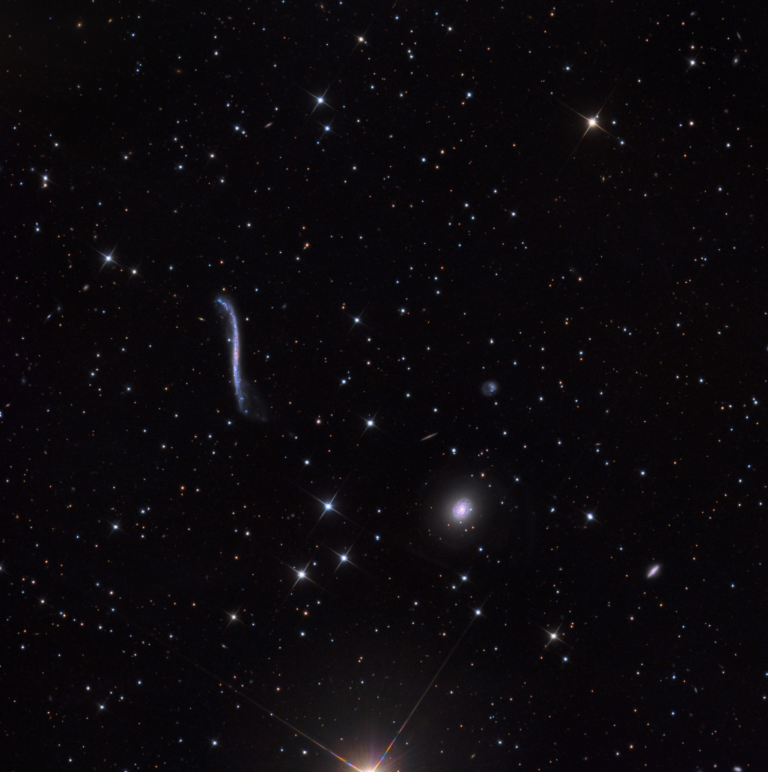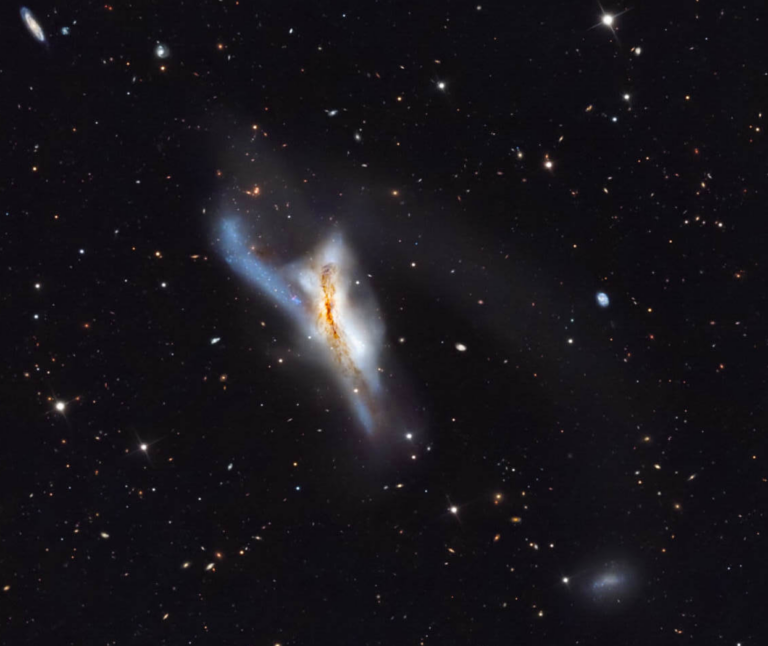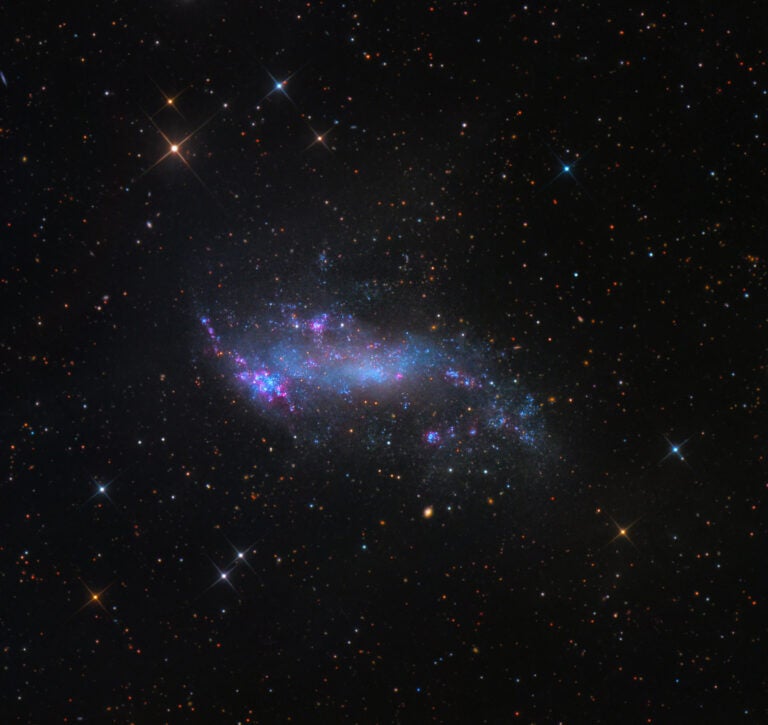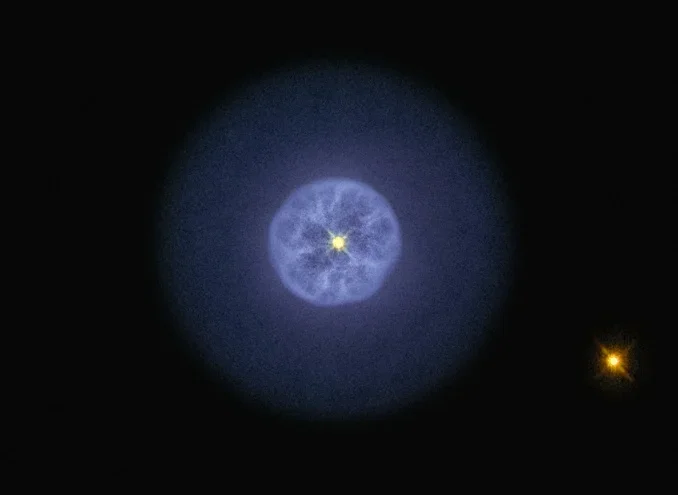I have heard from several readers who, while they enjoy looking at showpiece targets, also like it when we go off the beaten path. So this month, let’s turn our eyes to the faint and the formidable hiding within the constellation Cepheus the King.
Spotting Cepheus may itself be a bit tricky, since its brightest star, Alderamin (Alpha [α] Cephei), shines at magnitude 2.5. The rest of its major stars, which form the image of a house with a steeply pitched roof, all shine between 3rd and 4th magnitudes. To locate Alderamin, look not quite halfway between Deneb (Alpha Cygni) and Polaris (Alpha Ursae Majoris).
Once you’ve found the dim twinkle of Alderamin through your binoculars, shift 4° west-southwest to Eta (η) Cephei. Here comes your first real challenge. Just over a degree to Eta’s southwest is a grouping of 7th-magnitude and fainter stars that reminded Rhode Island amateur Jim Hendrickson of a tiny version of the Big Dipper. Jim’s Little Big Dipper, as he christened it in 2010, is a flip-flopped mirror image of its famous counterpart. The two “pointer stars” are the brightest, while several fainter stars form the rest of the bowl and handle extending to the northwest. The full pattern spans about 1.6°. Although it is a challenge through binoculars, I have spotted it with my 10x50s from my light-polluted suburban backyard, so it’s possible. Give it a try and let me know if you succeed.
Just as we use the Big Dipper’s Pointer Stars to find other stars in the sky, we can use the Little Big Dipper’s two pointers to find our next challenge. Extend the line between them below the Little Dipper’s bowl for about twice their span. There, just east of a small right triangle of 7th- and 8th-magnitude stars, lies our quarry: NGC 6946, the Fireworks Galaxy. A spectacular spiral galaxy, it gets its nickname from its preponderance of observed supernovae — 10 in the past century. (By comparison, the Milky Way averages about one or two per century.)
NGC 6946 is a tough challenge through common sized binoculars. But that’s the fun of it! I spotted it recently through my 10x50s, but only after I secured them to a tripod and viewed from a comfortable seated position. Using the Little Big Dipper and that right triangle as guides, I spotted NGC 6946 using averted vision. So if you don’t see it right away, persevere, as you may need to pull out all your best tricks for this one. Without shifting the aim of the binoculars, glance across the field for our next challenge, open cluster NGC 6939. The cluster is just north of the star at the right angle of that triangle. I saw it as a delicate, starless glow. If you are using 70mm and larger binoculars, some of the cluster’s 80 faint stars may be resolvable. Something to consider: While NGC 6939 is some 5,500 light-years away, its galactic “neighbor,” NGC 6946, lies something like 22 million light-years distant!
Too difficult? Here’s an easier option that doesn’t even require binoculars, just a dark sky. Trace the Milky Way by eye from Cygnus northward toward Cepheus. About 10° northeast of Deneb, you should notice that the Milky Way branches, with a portion heading off into southern Cepheus. This “spur” measures about 10° long by 5° wide and looks perfectly straight. Formed in part by the Cepheus OB2 stellar association, this region resolves into myriad stars through binoculars. It is also home to star clusters NGC 7160 and NGC 7235.
NGC 7160 is easiest to find by scanning 4° east from Eta Cephei back to Alderamin, and then continuing another 4° farther east. Look for a round, misty patch of gray light. Examine it carefully and you may just spot one, two, or three faint stars within the glow. All three form a sharply pointed isosceles triangle.
Our last target is NGC 7235, which lies just half a degree from 4th-magnitude Epsilon (ε) Cephei.
Like NGC 7160, this cluster also looks like a small, hazy smudge at first glance — at least, that’s how it appears in my 10x50s. Larger binoculars may be able to resolve one or two 9th magnitude stars, the cluster’s brightest. I hope you enjoyed these challenges. If you have suggestions for others, drop me a line through my website, philharrington.net. Until next time, remember that two eyes are better than one.


